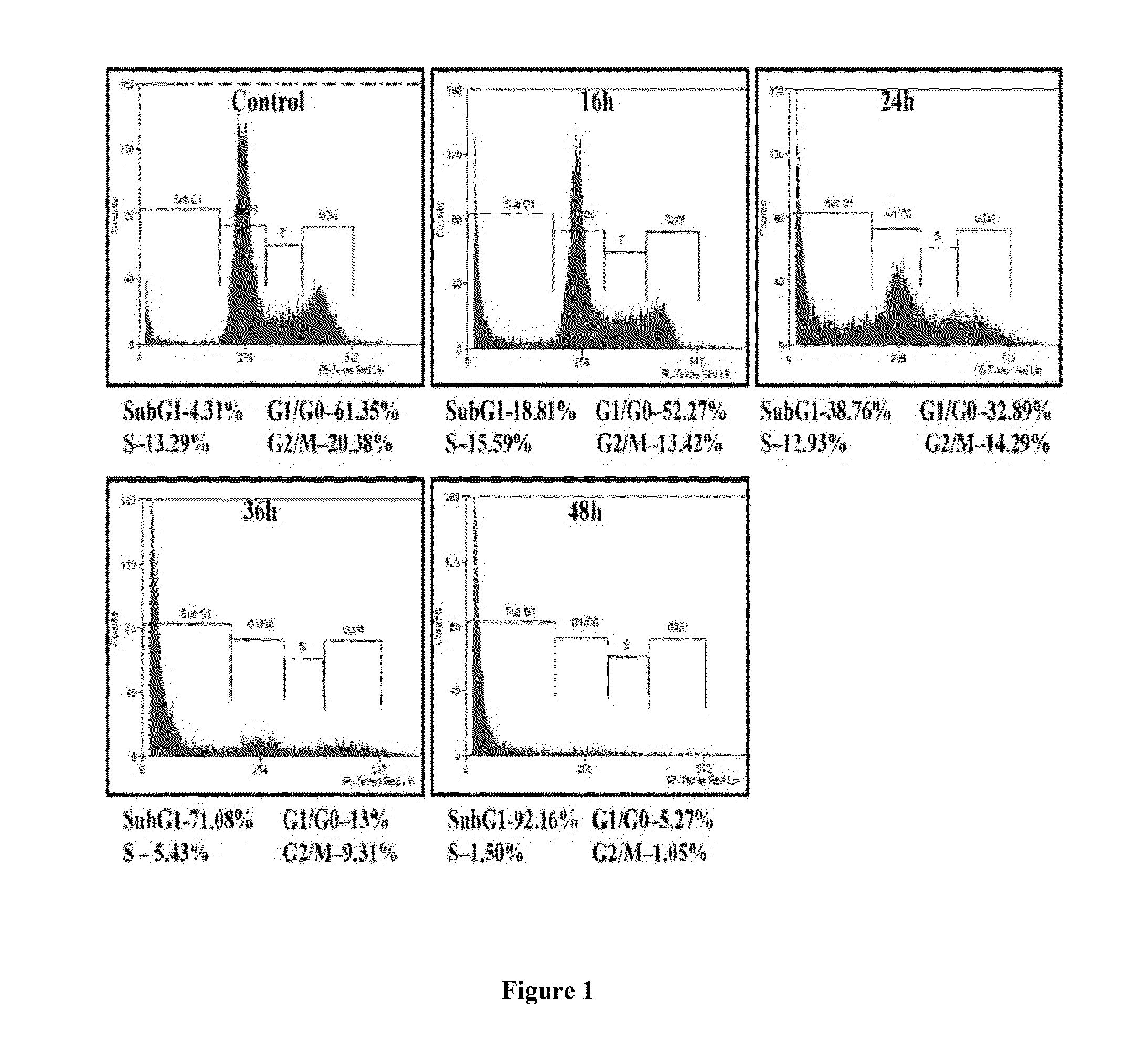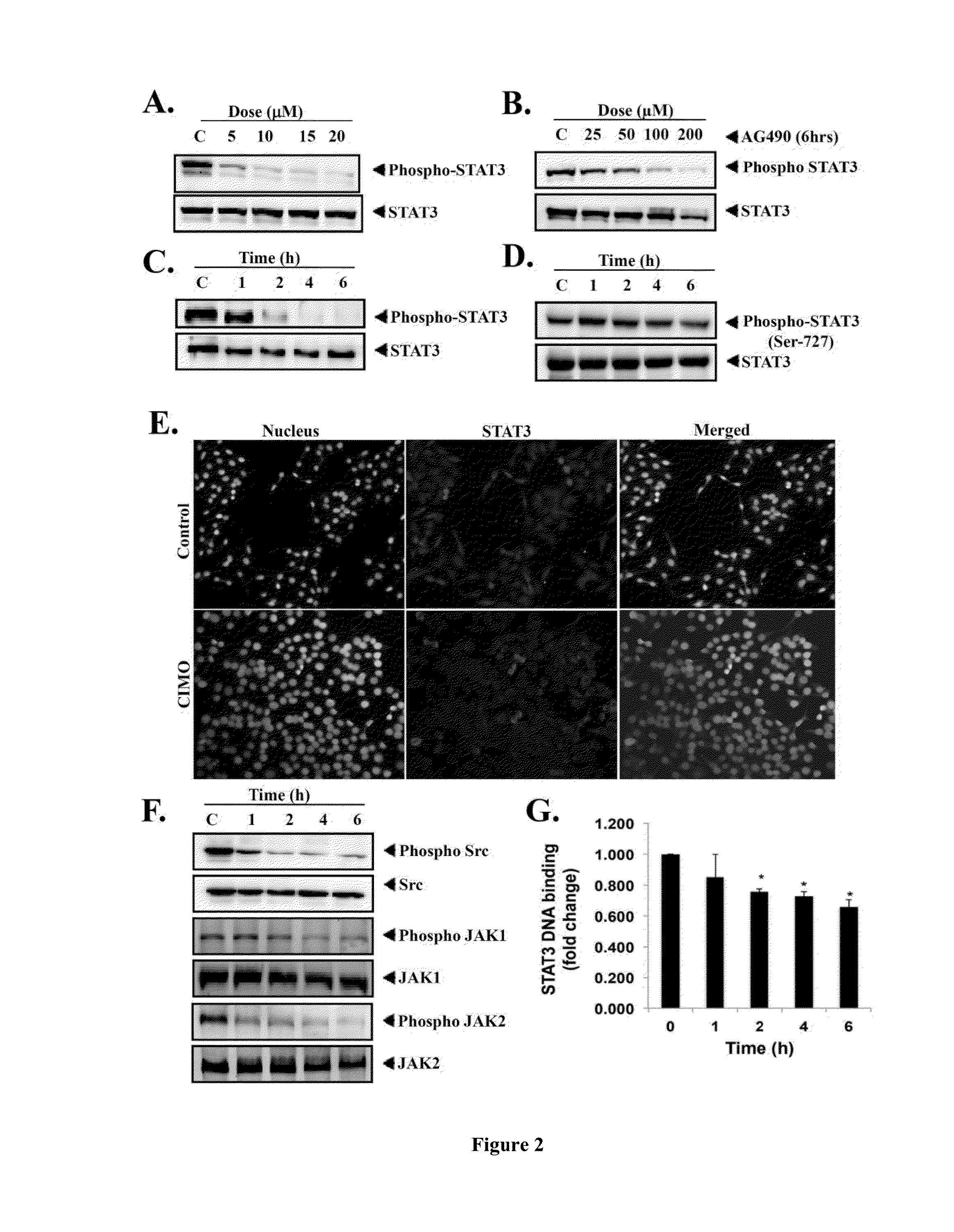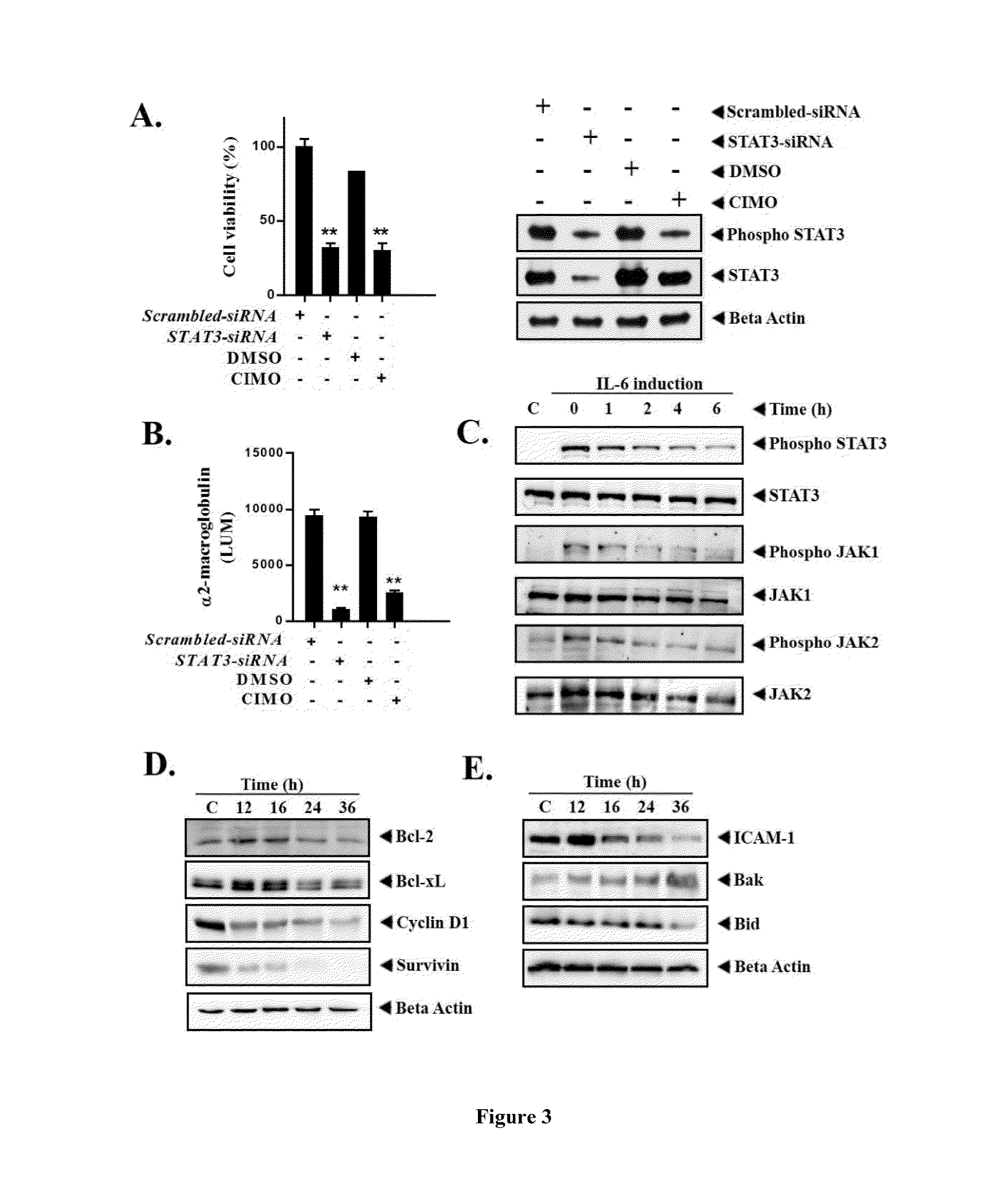Compounds as modulator of JAK-STAT pathway, methods and applications thereof
a technology of compound and pathway, applied in the field of biological chemistry, can solve the problems of complex synthesis procedure, lack of stability, toxicity to normal cells,
- Summary
- Abstract
- Description
- Claims
- Application Information
AI Technical Summary
Benefits of technology
Problems solved by technology
Method used
Image
Examples
example 1
Synthesis and Characterization of Formula I Compounds
Synthesis of 1-(2-amino)-1-(4-methoxyphenylethyl) cyclohexanol [Compound C]
[0099]The compound 1-[2-amino-1-(4-methoxy-phenyl)-ethyl]-cyclohexanolmonoacetateis prepared by the condensation reaction of 4-methoxyphenyl acetonitrile with cyclohexanone followed by catalytic hydrogenation which is further followed by reaction with glacial acetic acid.
(I) Synthesis of 2-(1-(4-(2-cyanophenyl)1-benzyl-1H-indol-3-yl)-5-(4-methoxy-phenyl)-1-oxa-3-aza spiro(5,5) undecane [Compound 1] (CIMO)
[0100]Compound 1 is obtained in two steps—[0101](a) Preparation of 2-(1 cyanophenyl)1-benzyl-1H-indole-3-carbaldehyde (a): This compound is obtained by using indole-3-carbaldehyde (1 mmol), 4-(2-cyanophenyl)benzyl bromide (1.2 mmol), potassium carbonate (2.5 mmol), and DMF (8 ml) as solvent and stirring for about 14 hours at RT.
[0102](b) Preparation of 2-(1-(4-(2-cyanophenyl)1-benzyl-1H-indol-3-yl)-5-(4-methoxy-phenyl)-1-oxa-3-aza spiro(5,5) undecane [Compo...
example 2
Formula I Compounds Suppress Proliferation of Cancer Cells in a Dose- and Time-Dependent Manner
[0188]The anti-proliferative activity of Formula I compounds are studied on HepG2 cells using MTT assay. Briefly, the cells (2.5×104 / ml) are incubated in triplicate in a 96-well plate in the presence or absence of different concentrations of compounds in a final volume of 0.2 ml up to 72 hours at 37° C. Thereafter, 20 μl MTT solution (5 mg / ml in PBS) is added to each well. After 2 hours of incubation at 37° C., 0.1 ml lysis buffer (20% SDS, 50% dimethyl-formamide) is added; incubation is continued overnight at 37° C.; and the optical density (OD) at 570 nm is measured by Tecan plate reader.
[0189]Among the tested compounds, Compound 1 [CIMO] is found to be the most effective with an IC50 of 7.3 μM, followed by other compounds which have IC50 ranging from about 9.8 μM to >50 μM (Table 1). Additionally, Compound 1 is tested on a panel of six cell lines including Hep3B, PLC / PRF5, AGS (gastric ...
example 3
Compound 1 (CIMO) Causes Accumulation of HepG2 Cells in Sub-G1 Phase
[0190]In late apoptosis, activation of endonucleases leads to fragmentation of genomic DNA into oligomers thereby contributing to a decrease in DNA content, which in turn leads to the buildup of cells in Sub-G1 phase. In order to evaluate the effect of Compound 1 on cell cycle distribution of HepG2 cells, flow cytometric analysis is performed. HepG2 cells are treated with CIMO at different time intervals up to 48 hours. Thereafter, cells are washed, fixed with 70% ethanol, and incubated for about 30 minutes about at 37° C. with 0.1% RNaseA in PBS. Cells are then washed again, resuspended, and stained in PBS containing 25 μg / ml propidium iodide (PI) for about 30 minutes at room temperature. Cell distribution across the cell cycle after PI staining is analyzed with a Beckman Coulter flow cytometer.
[0191]Interestingly, CIMO increase the accumulation of the sub-G1 cell population to 18.8%, 38.7%, 71% and 92.1% at 16 hou...
PUM
| Property | Measurement | Unit |
|---|---|---|
| melting point | aaaaa | aaaaa |
| temperature | aaaaa | aaaaa |
| time | aaaaa | aaaaa |
Abstract
Description
Claims
Application Information
 Login to View More
Login to View More - R&D
- Intellectual Property
- Life Sciences
- Materials
- Tech Scout
- Unparalleled Data Quality
- Higher Quality Content
- 60% Fewer Hallucinations
Browse by: Latest US Patents, China's latest patents, Technical Efficacy Thesaurus, Application Domain, Technology Topic, Popular Technical Reports.
© 2025 PatSnap. All rights reserved.Legal|Privacy policy|Modern Slavery Act Transparency Statement|Sitemap|About US| Contact US: help@patsnap.com



